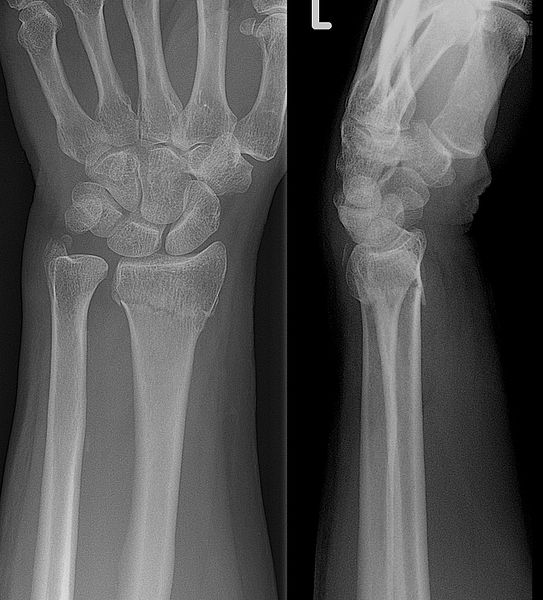Science of Fracture
What is Fracture
Any break in the continuity of bone tissue (hairline or multi-fragmented (comminuted))
Why Fracture?
Stress applied to the bone tissue exceeds its strength
Stress applied to the bone tissue is rapid and multi-directional
Idiopathic conditions that affect bone strength
Types of Forces
Direct: fracture occurs at point of force impact
Indirect: fracture occurs as a result of compression or rotational force applied at a distance
Fracture Risk Factors
- trauma/sudden impact
- history of osteoporosis (loss of bone density)
- flexion activities, such as sit-ups, repetitive low bending, or reaching lifting objects in a flexed position should be avoided to minimize risk of compression fracture
- female
- body type (tall, thin)
- history of falls. A FOOSH - fall on the outstretched hand, is a common fracture etiology for the distal arm and wrist. A distal radius fracture is also known as a Colles' fracture. Note the fracture line on the radial neck in the Colles' fracture image below.

Lucien Monfils [CC BY-SA 4.0 (https://creativecommons.org/licenses/by-sa/4.0)]